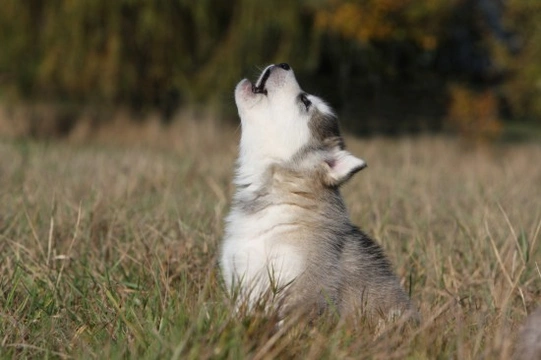Pets
Pets for studWanted petsBreedersAccessories & services
Knowledge hub
Support
Support & safety portal
Dogs and vocalisations
While dogs have yet to become proficient in the English language(!), it is certainly true that some dogs are more talkative, or rather, vocal, than others. Dogs have a relatively wide range of vocal sounds at their disposal, including barking, howling, growling, whining and various others, all of which have their own unique meanings, which can change depending on the situation.
Added to which, all of the different vocalisations that dogs have at their disposal can mean different things at different times; growling is not always a sign of aggression, and whining is not always a sound of distress. If you wish you could better interpret your own dog’s range of vocal skills and learn to recognise what they mean depending upon the situation, you are by no means alone. Read on to learn more about the range of canine vocalisations, and some insights into what they mean.
Vocalisations and body language
You should “read” or “listen” to your dog’s body language as well as their vocalisations in order to interpret what they are saying to you, as taken alone in the abstract, it can be hard to assign the correct meaning to an audible sound alone. Putting together your dog’s body language with their “voice” will together, be able to tell you what your dog is “saying” in a way that the sound they are making alone cannot do.
Barking
Barking is of course probably the most common and best-known canine vocalisation, and the one that has the most potential meanings behind it! When combined with different body language signals, barking can be used to indicate:
- Aggression in the face of another dog or person
- Excitement and an invitation to play
- As a deterrent to ward off an approach
- A warning that someone is approaching their territory, or an alert to the family that someone is at the door
- That they are bored or lonely and want someone to notice them
- That something is wrong and again, that they require your attention
Growling
Growling is often associated with aggression or potential aggression, and is one vocalisation that it is very important to read correctly, as this may well be the case. However, growling is by no means limited to situations that are provoking an aggressive response, and there are a range of other potential reasons for growling too.
Some of the various reasons for growling that you can identify depending on body language include:
- Aggression, and a potential attack
- Defensive aggression, and a warning to keep away
- Pain, injury or something wrong that is distressing the dog
- Play fighting with other dogs, or even their own toys
- An invitation to play with you, again, simulating a fierce appearance as part of the game
Howling
Not all dogs make use of their full vocal range including howling, but many dogs certainly do! It is most commonly heard from dogs that still retain strong pack instincts, such as the Siberian Husky. Howling is one of the vocal cues that most commonly confuses people, as it can sound mournful and chilling to listen to, but howling is actually one of the most commonly used vocalisations by dogs (and wolves) in the wild, to communicate with their pack mates over large distances.
Dogs may howl if they are bored, frustrated, stressed or lonely, as a cry for someone to come and see them. The howl is a rather lonely sound, and this is one of its best-known meanings.
However, dogs usually howl to identify themselves to other dogs or their friends, and may howl at you or to you as well. You can often encourage or teach your dog to howl by making howling noises at them, and they will often join in! Howling generally means “we are together” or “let’s be together,” and so it is relatively easy to set your dog off in a howling sing-song by beginning howling yourself.
Some owners even find that certain specific songs set their dogs off howling or “singing along,” as there is evidently something within the song that the dog identifies as howling! Dogs may also howl mournfully to indicate pain or that something is amiss, and that they require assistance or attention.
Whining and crying
If your dog is whining or crying, it is easy to assume that they are unhappy or hurt. However, the main commonality regarding whining is that your dog needs or wants something, so while your dog may well whine or cry if they are hurt, or unhappy being left alone at night, they are equally likely to cry for treats or attention! Whining can also be a vocalisation in excitement, to encourage you to play with them, or chivvy you along if you have promised them a walk and are taking too long to get going!
Grumbling and sighing
Some dogs appear to be almost constantly grumbling, a rumbling noise that comes from the throat and is distinctive from a growl. This may simply mean that your dog is talkative, in the way that some people are, and that they use the inflections of their tone to speak to you throughout the day. However, just like people, all dogs are apt to sigh or make groaning noises now and again, and they might not even always realise when they are doing it! Tired, just woken up, bored, thinking about something; grumbling and sighing can accompany all of these feelings and many more.



